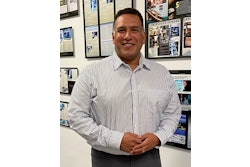These three elements: speed, precision, and payload, will also come with trade-offs, according to Scott Marsic, Sr. Product Manager at Epson Robots, who presented Automation 201 at the PACK EXPO Connects Innovation Stage this afternoon.
When evaluating these requirements in order to develop an automation system, you are unlikely to get everything you need due to inevitable trade-offs, said Marsic, and if you don’t know the ins and outs of your current process – and where your bottlenecks are – you won’t be able to determine where to invest for the best return. “This is why,” said Marsic, “It's critical to understand up front what your goals are and clearly define your expectations.”
For those who may be thinking, “Wait, where do I even start an automation project?” Epson offers a white paper called Automation 101, which can be found here. Marsic said the white paper is a great place for automation beginners, and provides an easy to use framework with five simple steps:
1. Why does your organization need to automate? What are your goals?
2. Define and document your current process.
3. Identify your requirements.
4. Identify the automation components you need.
5. Who will do the work?
Automation 201 focuses on the 3rd step of identifying requirements. Speed, being the first of the three requirements, is “one of the most important justifications in a business case for a robotics implementation,” according to Marsic. But, he asks, what does improving speed mean to you? What part of the manufacturing process needs to be set up to achieve that time, and what are you willing to give up to achieve those changes? A simulation or mockup of the application will assist with understanding what is possible. Marsic also notes that the robotics manufacturer specification of a cycle time should not be equated to the cycle time of your own project.
Throughput is another aspect of the speed requirement, and it is the quantity of output produced within a specific period of time. This takes into consideration, said Marsic, “How peripheral components interact with the robot, how parts are picked up, late delays with PLCs and the robot vision.” So, it is important to know if you are trying to improve cycle time or throughput in your process. Introducing independent parallel processing can also provide big gains in overall throughput, said Marsic, instead of using sequential processing.
Layout also affects speed, as it can impact reach and cycle times. Marsic said to consider if the layout is fixed or can be adjusted. For example, moving the payload and end arm tooling, or optimizing weight of the payload.
Peripheral interaction is the final element of speed considerations, and Marsic said there are some low cost, high benefit wins with small component adjustments. This could mean optimizing code, improving tool activation, or bringing valves, vacuum generators etc. closer to the system to improve cycle time.
And the final word on speed, said Marsic is to plan ahead. “Document your process, look for the low-hanging fruit and plan ahead.”
The second requirement is Precision, or the robot’s ability to return to the same position and orientation repeatedly (repeatability). Said Marsic, “The entire system is often referred to as the Stack, and each element of the Stack has its own precision and respective tolerance. So, in addition to the robot, make sure to evaluate the elements attached to the robot, such as the end of arm tooling, cabling, its rigidity, your vision system, and its field of view, as well as peripheral equipment. Things like manufactured parts, conveyors, and pallets. Like musicians in a symphony, all the components in an automation system need to work in harmony to arrive at a desired output. The overall tolerance of the Stack will have an impact on your ability to achieve a desired precision.”
Marsic offered some pointers from Epson:
· Evaluate your robot type. Are you using the right robot for the job? Only use what you need.
· Localize your workspace to maintain precision. “The further out the arm extends, the more precision degradation you may experience. So, get a robot that optimally moves within the designated workspace.”
· Look at fixtures and tooling. Pneumatics or air will potentially not get the same precision as a mechanical gripper. A molded vacuum tool that is formed to the shape of the part can improve speed and precision, but the trade-off is incremental cost.
· Peripheral feedback. The addition of peripheral feedback, such as a vision system or force feedback, can help improve the precision of the system.
The last requirement is Payload, and Marsic said there can be more than meets the eye with this topic. “When selecting a robot, look at the entire payload that will be moved by the arm. This includes not just the weight of the product being picked up, but also the end of arm tooling. And this can include mounting plates, grippers, air valves, cameras, etc. Make sure to consider all payload weights up front. They all get added together as part of the payload.”
Also, consider inertial effects, or the resistance to velocity change, on the robot. “Too much inertia dramatically effect robot cycle times,” he said, “And this has the potential to decrease your overall system throughput.”
Knowing these three requirements will enable you to optimize your automation. Know your current process. Know your trade-offs. “Not everything you implement is going to have a big trade-off, said Marsic, “Do your homework, buy the appropriate tools, get input from professionals and rely on vendors and integrators for support. It's too easy, and we see it all too often, people buy the wrong equipment, spend too much or too little and they miss the target.”
To see this Innovation Stage presentation in its entirety (available through March 31, 2021), click here.

























